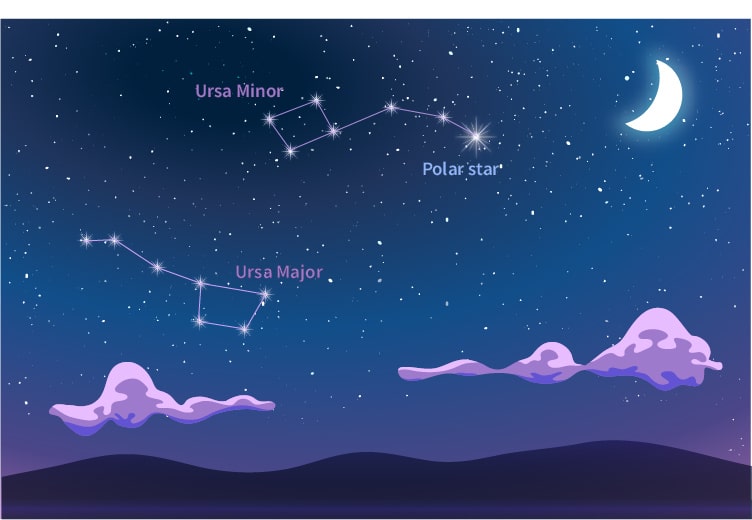Stargazing with children

Are you also so impressed by our starry sky? Maybe your kids are just as fascinated by the moon, stars and planets. Go stargazing with your child and discover the universe! In this blog we tell you everything you need to know about stargazing with children.
Discover the night sky with your child
Stargazing with children is very accessible and a good way to introduce children to astronomy. Let your child, nephew or niece stay up a little longer. There are so many beautiful things to discover at night! Wait until it’s dark outside and get your binoculars. Scan the night sky and discover Ursa Major, Saturn and the moon. There is so much to see!
See the moon and the planets
Not sure where to start? The moon is a good starting point. Study the light and dark spots on the moon disk, describe what you see with your child or take a picture of the moon together. The best time to look at the moon is during the first or the last quarter of the moon phase, when the moon is half illuminated.
Thereafter you can scan the sky and have the chance to see the planets Jupiter, Saturn, Mercury, Venus and Mars with the naked eye or with binoculars. In the spring you can see the large planet Venus. If you look east an hour before sunrise, you can admire Mars, Jupiter and Saturn. You can recognize Saturn by its golden yellow color and the iconic rings. Jupiter is cream colored and Mars has an orange-red hue. Can your little astronaut distinguish these planets from each other?
Explore the most famous star patterns
Time to discover the starry sky! Ursa Major, Ursa Minor and Orion are the most famous star patterns seen in the Northern Hemisphere. The Ursa Major constellation is clearly visible from late winter to early summer. If you draw an imaginary line from Ursa Major towards the horizon, you can see the bright Polar Star. This special star is always in the same place in the sky. It is a star that seems to revolve around the entire starry sky. The North Star is part of Ursa Minor.
In winter you can see the constellation Orion well. You don’t need more than your own eyes or binoculars to see Orion. This constellation is shaped like an hourglass that you can find the fastest by spotting the two giant stars at the top left and bottom right of the hourglass.

Stargazing tips
For an evening stargazing with children, you really don’t need more than just your own eyes and a good view of the starry sky. Curious about indispensable tips and tools to get the best out of your stargazing evening? Then read our blog with 7 stargazing tips!
Stargazing during the day
Would you rather watch the stars during the day with children? Visit a planetarium with your child! In a planetarium it seems like you are looking at the stars on a beautiful clear evening. Go on a journey and explore the starry sky up close. Did you know that there are several observatories that have special viewing evenings for children?
In this blog you have read everything about stargazing with children. Hopefully, our tips and ideas have helped you. You are now all set for an adventurous journey through the starry sky with your little astronaut!
And we have a special tip for you! Don’t feel like going out, or is the weather bad? View the stars during day and night through our One Million Stars browser app!
